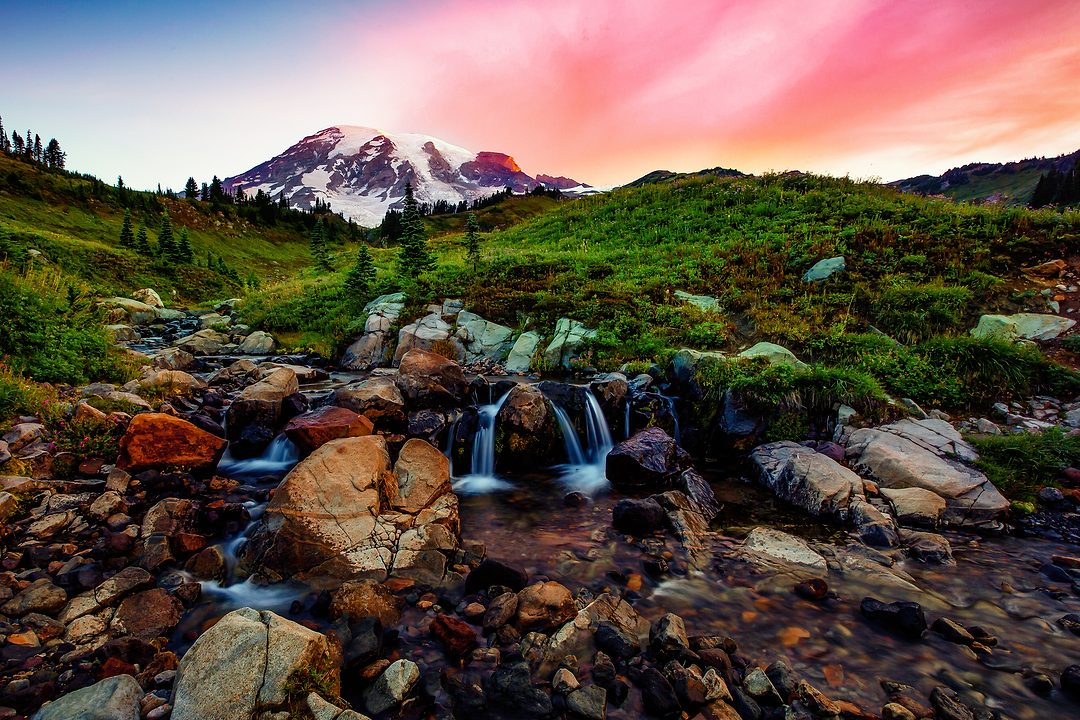Our National Parks
The shifting landscape of the COVID-19-era.

Before COVID-19 hit, national parks across the United States were busy. According to Time magazine, 327 million national park visits were tallied in 2019 (https://bit.ly/3D3Zngk). This attendance number was the third-highest annual total since recordkeeping began in 1904. COVID-era visits to national parks continued the upward trend, especially in high-profile parks. Yellowstone recorded the busiest month in park history in July 2021.
What effects do we see from these hordes of park visitors? Can the plumbing systems, or lack thereof, handle the crowds?
In the early months of the pandemic, many national parks closed. However, attendance spiked once the parks reopened. Bloomberg reports (https://bloom.bg/3D5KSbM): “National park tourism has grown steadily for decades, particularly accelerating in the 2010s. After a brief pandemic lull, visitors have returned to seek fresh air, smashing monthly attendance records at parks such as Yellowstone and Zion. In June alone, over 31 million people visited a National Park Service site.”
On a positive note, increased tourism brings revenue to local businesses near park gateways. Hotel stays, equipment rentals, forgotten sunscreen purchases and so on increase with traveler demand. Does the influx of gate fees cover the park expenses incurred by hordes of visitors?
No. At least, that seems to be the short answer.
The National Park Service website breaks down the subsidization with an example: “Entrance fees for national parks predate the establishment of the National Park Service in 1916. For example, Mount Rainier National Park started charging an entrance fee in 1908. Factoring in inflation, the $5 entrance fee they charged in 1914 would be the equivalent of a $123 entrance fee today —more than four times the price of the new seven-day $30 vehicle pass.”
Tax dollars subsidize the operations of the parks. Since 2010, staffing dropped and appropriation budgets were relatively flat, while visitor numbers jumped.
In the Bloomberg article, Kristen Brengel, senior vice president at the National Parks Conservation Association, told a subcommittee of the U.S. Senate Energy and Natural Resources, “The crowding has led to multi-hour waits for popular trails, increased litter, wildlife disruption and defacement of American Indian artifacts.”
Park bathroom woes
For the scope of this column, I will focus on one costly aspect of national parks that is under additional stress in 2021: outhouses. At Washington state’s Mount Rainier National Park, there is an expensive toilet.
Back in 2001, an annual helicopter trip was required to remove the 55-gallon drums of waste that accumulated from this high-alpine outhouse. From 2006 to 2015, a composting toilet improved the situation, depending on your role within the park staff. At that point, seven-gallon buckets were carried down the mountain by hand. In 2016, the park upgraded to a new technology supplied by ToiletTech Solutions (https://bit.ly/30qVvro). Geoff Hill developed the technology at a sister park in Colorado.
Hill is a former doctoral student who studied backcountry waste. He devised a system to separate urine from solid waste using a conveyor belt. Solid waste is transported from the main chamber to a separate container, activated by a foot-powered pump. This keeps the solid waste “dry, lightweight and free of viruses usually present in a wet barrel of urine-soaked waste.”
In Colorado’s Rocky Mountain National Park, where Hill developed the system, a popular hike for adventurous visitors winds to the top of Longs Peak. The 14,000-foot mountain has only four toilets on the trail across many miles.
A Guardian article describes the mess in graphic detail (https://bit.ly/31Nmj5v): “By 2015, rangers were trekking to the toilets and finding repulsive conditions. At its worst, the solid matter would freeze and thaw repeatedly and rise above the seat. Rangers would have to dig the material from the chamber and load it into a five-gallon bucket, place the cargo onto a pack animal and ride down.”
Since the initial installations, the ToiletTech system is now used throughout parks across the United States and western Canada.
Modernizing our national parks
Beyond the logistical difficulties of keeping the bathrooms clean, some areas just aren’t able to handle the crowds. A few parks and crowded zones now require reservations or lottery systems to limit the number of daily visitors. CNBC found that visitors looking to catch a sunrise at the top of Cadillac Mountain at Acadia National Park in Maine struggled to even get out of their car. The park superintendent said some days they had 500 cars fighting for the 150 parking spots (https://cnb.cx/3D9ga1s).
Is exclusivity now required for parks to maintain their attractiveness? Lines are for rides at Disney World, not for a view of our wildlands. Maybe the COVID-era travel patterns exposed the larger vulnerability of our parks. Restroom technology is not the only fix we need, even though it would be great to see more ToiletTech systems at parks. As a nation, we need to decide how much we should invest in protecting and modernizing park trails and gateways.
Some help is on the way (https://bit.ly/30ePgHr). The Great American Outdoors Act of 2020 provides up to $1.9 billion per year for five years to upgrade and update items on maintenance backlogs across the nation (https://bit.ly/3wFR4VG). Will that be enough?
As a side note, park rangers are living saints. They are not paid well, yet some of them haul literal buckets of human waste down mountains so you can have a nice experience and see the wild on vacation.
At a minimum, more parks should expand reservation systems for visitors. A brief RSVP for your future national park road trip might provide just enough courtesy for park staff to prepare for appropriate crowds and prevent backlogs before they form.
Also, don’t be stingy at the gift shop.





